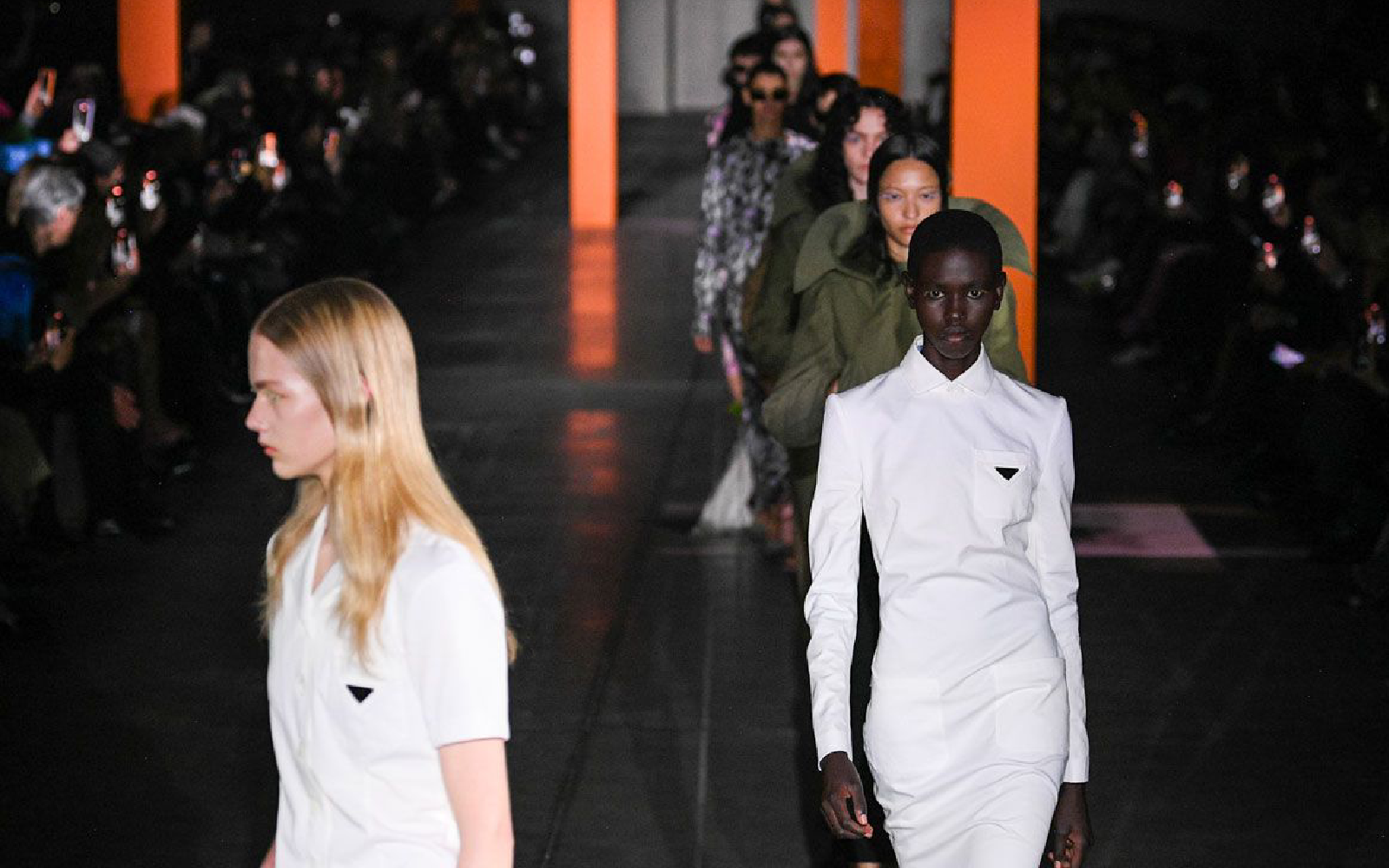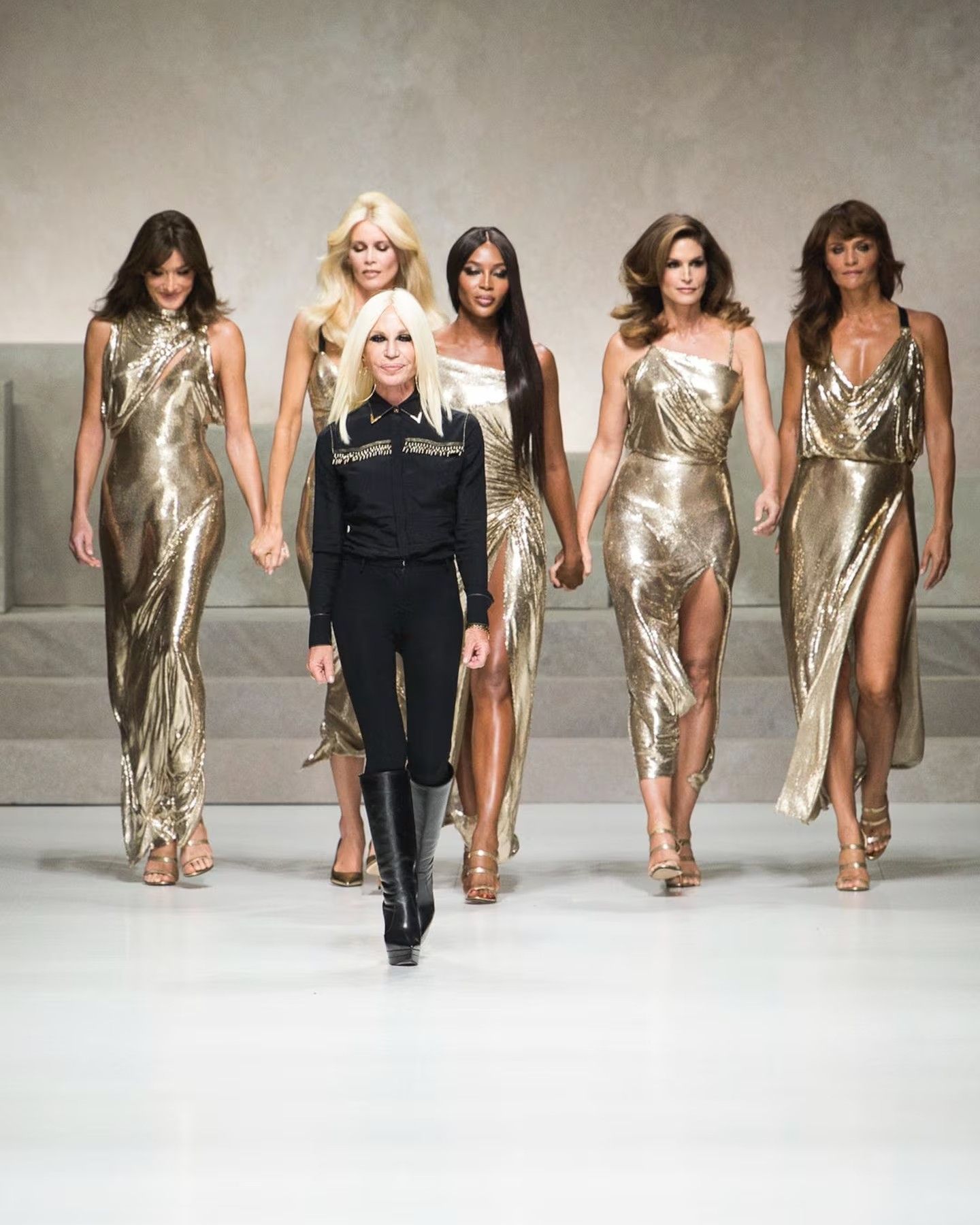
Silly clothes for a world on fire FW23's social minimalism
At a time when fashion shows in tropical paradises have become the norm, when fashion pushes the boundaries of entertainment and when more and more distractions come between the audience and the collections, it often feels like clothes are the last thing we should be thinking about. We have called it the era of fashion gimmicks, because of a growing number of catwalk cabaret shows where designers' creativity is expressed in extravagant ways, not for a Margelian coupe du génie, but to curry favour with the algorithm god. The flux generated by viral fashion has triggered an internal phenomenon of polarisation. Brands canonically in search of a new simplicity have embraced a more radical minimalism, and the usually more flamboyant brands have preferred to distance themselves from the fashion cabaret. Saint Laurent, J.W. Anderson, Loewe, Dolce & Gabbana, Givenchy, Balenciaga, Prada, Ann Demeulemeester, Courrèges: FW23 followed the intentions of this Copernican revolution and presented a dark masterpiece of balance and measure, far from subcultural hints and in search of universality in a panorama of decay. It was the season of black, of the power suit, of dusty nostalgia, of formidable silhouettes arming themselves against the world.
The brooch in the shape of a white lily made of modest white cotton that accompanied Prada's invitation heralded a fashion show of modesty in which the uniforms of World War II army nurses were adorned with the decorative elements of wedding dresses. «What's important to me now, above all, is to give meaning to the humble, to appreciate humble professions, simple professions, and not just extreme beauty or glamour» Miuccia Prada told Vogue backstage. For Anthony Vaccarello, however, the starting point was glamour itself, seen as an inaccessible value lost in the meanderings of the past, in a tribute to the Yves archive, to the square shoulders of the 1980s, to the women dressed as men that the Maison's founder loved so much: «Maybe elegance is something we no longer have a feeling for today. Maybe it no longer interests us. Maybe it has a different meaning, or maybe it has no meaning at all. But I really wanted to take up this idea.» Nicolas di Felice criticised our "connected life" by having models emerge from a wall of fog illuminated only by the faint light of their smartphones: «The sky is blue - a metallic voice finally said - Do you see me? I see you.» For Acne Studios, the backdrop seemed to recall biblical descriptions of earthly paradise and to condemn our progressive detachment from the rhythms of nature.
For Demna, FW23, the first after the scandal he was embroiled in last year, was a way of putting his head in the noose and scapegoating a scandal that in itself only masks the contradictions of globalisation, the dystopian narratives the online world can make out of simple images. A style that eschews the flashiness of the meme dresses that defined the house's success under the Georgian designer and instead focuses everything on construction and materials, on the fabrics so dear to Cristobal's heart, starting with the 17 all-black looks that want to speak of a return to tailoring but are just the sad banner of a neutered creativity. Cleanliness, austerity, neutrality: «I needed a show because I need to move forward. I need to free myself, through my work and what I am doing, and get it out there» he had said in a conversation at Balenciaga headquarters in the days before the show, 'because it's been a hellish three months and I really do not know how I had the strength mentally to deal with it."
Black, like archive, is a central non-colour shade of Balenciaga's, in keeping with the mood of fashion in general. It is restorative precisely because it is neutral in the face of an increasingly polarised world, in a collection that shies away from judgements because it is aware of the destructive effect they can have. If two years ago the throwback to the 2000s was a response to the need to find something reassuring, recognisable and less oppressive than the grim post-pandemic reality - a system of values and cultural references that was anachronistic compared to a world where no one could afford the shameless superficiality that became pop culture - last season's social minimalism speaks of awareness and anxiety. At least for the part of the fashion system that refrains from constructing "bubble narratives" in tropical paradises, that refrains from averting its gaze from a world burning amidst vitamin colours and lace. More than a year after the start of the Ukrainian invasion, the mood that dominates the fashion world is indeed fear, of criticism, of the future, of superficiality, and designers almost seem to want to apologise for the fact that it is their job to design three-thousand-euro jackets in a society eroded by capitalism, conflict and climate crisis.























































